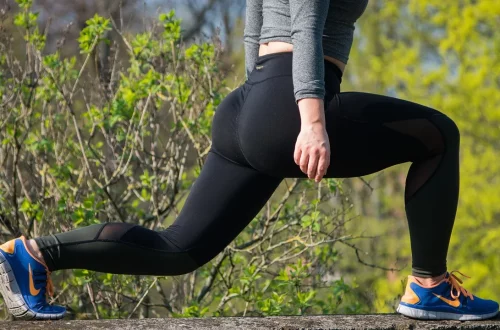
Essential Soccer Conditioning Drills to Boost Player Performance
Soccer is not just a game of skill; it is also a test of physical endurance and mental toughness. The modern game demands players to be in peak physical condition, as matches can often last for 90 minutes or more, requiring bursts of speed, agility, and strength. Conditioning plays a crucial role in a player’s ability to perform consistently at high levels, making it essential for coaches and trainers to incorporate effective conditioning drills into their training regimens.
The right conditioning drills can enhance a player’s stamina, agility, strength, and overall performance on the field. These exercises help in building the muscular endurance required to withstand the rigors of a match, while also improving cardiovascular fitness. Moreover, conditioning drills are integral in preventing injuries, as they prepare the body for the physical demands of soccer.
In this article, we will explore essential conditioning drills that can significantly boost player performance. These exercises focus on various aspects of physical fitness necessary for soccer, including speed, agility, and endurance. By integrating these drills into regular training sessions, players can develop their physical capabilities, ultimately leading to improved performance during matches.
Speed and Agility Training
Speed and agility are two of the most critical components in soccer, as quick movements can often determine the outcome of a play. Training to enhance these attributes involves a combination of sprinting drills and lateral movements that mimic the actions performed during a game.
One effective drill for improving speed is the “Cone Sprint.” Set up a series of cones in a straight line, spaced about 5-10 yards apart. Players sprint from one cone to the next, focusing on quick acceleration and maintaining top speed. This drill helps in developing explosive speed, which is essential for breaking away from defenders or closing down opponents.
Agility can be honed through drills such as the “Ladder Drill.” Using an agility ladder, players perform various footwork patterns, such as high knees, in-and-out steps, and lateral shuffles. This drill not only improves foot speed but also enhances coordination and balance, which are vital for performing quick turns and changes of direction during matches.
Incorporating shuttle runs into training can also be beneficial. Players start at a central point and sprint to a designated marker and back, repeating this process multiple times. This not only improves speed but also builds endurance, as players must maintain high intensity throughout the drill.
To maximize the effectiveness of speed and agility training, it is essential to focus on proper technique. Players should be encouraged to keep their body low while sprinting, using their arms efficiently to drive forward. Additionally, coaches should ensure that players perform dynamic warm-ups before these drills to prevent injuries.
Ultimately, speed and agility training is crucial for soccer players looking to elevate their game. By consistently incorporating these drills into their routines, players can experience noticeable improvements in their on-field performance, enabling them to outpace opponents and make decisive plays.
Endurance Conditioning
Endurance is a fundamental aspect of soccer, as players are required to sustain a high level of performance throughout the match. Developing cardiovascular endurance is crucial for maintaining stamina, enabling players to run, sprint, and recover effectively during the game.
One of the most effective ways to improve endurance is through “Interval Training.” This involves alternating between high-intensity bursts of exercise and lower-intensity recovery periods. For instance, players can perform sprints for 30 seconds followed by a 1-minute jog. This method not only boosts aerobic capacity but also enhances anaerobic performance, allowing players to recover quickly during intense moments of the game.
Another beneficial drill is the “Fartlek Training,” which combines continuous training with interval training. Players run at varying speeds and intensities throughout a designated distance. For instance, they may sprint for a short distance, then jog, and repeat this pattern. This variability mimics the unpredictable nature of a soccer match, making it an effective endurance training method.
In addition to these drills, incorporating small-sided games into training sessions can significantly enhance endurance. By playing in smaller teams, players are forced to constantly move and engage in high-intensity efforts, which builds both endurance and game-specific fitness.
It is essential to remember that nutrition and hydration play a vital role in endurance training. Players should be educated on the importance of fueling their bodies with the right nutrients and staying hydrated, especially during intense training sessions.
By focusing on endurance conditioning, players can improve their overall fitness levels, allowing them to maintain peak performance throughout the match. This not only benefits individual players but also contributes to the team’s success as a whole.
Strength and Power Development
Strength and power are crucial attributes for soccer players, enabling them to tackle opponents, hold their ground, and perform explosive movements such as jumping and sprinting. Building strength through specific drills can significantly enhance a player’s performance on the field.
One effective strength training method is “Resistance Training.” Incorporating exercises such as squats, lunges, and deadlifts can build lower body strength, which is vital for powerful kicks and tackles. Additionally, upper body strength should not be neglected; exercises like push-ups and bench presses can improve overall stability and strength.
Plyometric exercises are another excellent way to develop power. Drills such as box jumps, medicine ball throws, and jump squats focus on explosive movements that help players generate power quickly. These exercises train fast-twitch muscle fibers, which are essential for short bursts of speed and agility during a game.
Another drill to consider is the “Kettlebell Swing.” This exercise targets multiple muscle groups and enhances core stability, which is crucial for maintaining balance and control during gameplay. Coaches should emphasize proper form to prevent injuries and maximize the effectiveness of strength training.
Incorporating strength and power development into training sessions not only improves athletic performance but also helps in reducing the risk of injuries. By strengthening muscles and improving overall body mechanics, players can withstand the physical demands of soccer.
In conclusion, focusing on strength and power through targeted conditioning drills can significantly enhance a player’s performance on the field. By developing these attributes, athletes can improve their ability to tackle, sprint, and maneuver effectively, leading to greater success in their soccer endeavors.
—
This article is intended for informational purposes only and should not be considered medical advice. Always consult with a healthcare professional for any health-related concerns.




